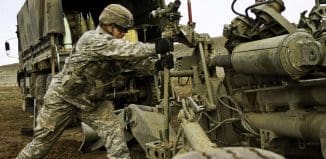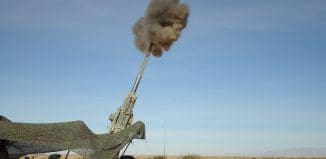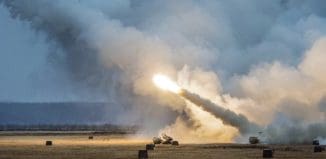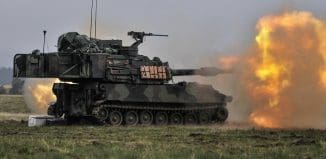Artillery Breakthrough at the Amphibious Arena
This post is also available in:  עברית (Hebrew)
עברית (Hebrew)
US Marines conducted a firing of the High Mobility Artillery Rocket System (HIMARS) from the deck of an amphibious transport dock, scoring a major extension of the land-based platform’s ability to function as naval artillery.
According to defenseworld.net, a detachment of Marines set up the vehicle-borne launch system on the flight deck of amphibious transport dock USS Anchorage (LPD-23). Programmed with information about the objective, suspected enemy air defenses, on a nearby island, the HIMARS launcher fired off a rocket destroying the target 70 kilometers away, according to news.usni.org.
HIMARS, a vehicle-launched rocket system first developed for the US Army, is a land-based precision weapons system the Marine Corps uses for fire support against artillery, armor and air defenses. Its GPS-guided munitions travel well beyond the reach of its field artillery cannons. It’s transportable by C-130 Hercules aircraft.
The missile strike, coming during the biannual amphibious task force exercise off southern California, marked a big first for the Navy and the Marine Corps.
“The ability to project power from and at sea is critical,” said Lt. Col. Tom Savage, operations officer with 1st Marine Expeditionary Brigade.
Senior officials have been looking at how the Marine Corps, which is historically focused on land based operations, can support the Navy at sea and bolster the amphibious force’s ability to obtain and maintain “sea control,” in areas of current and potential future operations.






























